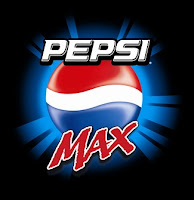Walt Disney once said “The way to get started is to quit talking and begin doing.” And that is the point we have arrived at in this series on how to break a sugar addiction.
In the book I tell of the ‘cold turkey’ approach I took. At the time I wrote that I was basing it on a case study of one. Me. Now thousands of people of broken the sugar habit and hundreds of them have written to tell me of their experiences. And none of it has changed my mind.
Every person that has told me of going cold turkey has ultimately managed to kick the habit. There’s nothing fun about the withdrawal period but it does end. And once it does they are completely free from the desire to eat sugar ever again. A plate of Bikkies holds all the attraction of a plate of raw broccoli.
Those that try to ‘eat sugar in moderation’ find the going much harder. They find the cravings just as strong for months on end. They feel deprived every time someone else is eating sugar. They barely lose any weight and they feel pretty awful pretty much all the time. Sounds like fun doesn’t it?
Addiction works by developing a reward and punishment system. As soon as you stop taking the addictive substance its euphoric effect begins to decline, creating a mild depression in the process. It feels like an emptiness (or even a boredom). It doesn’t hurt but as it accumulates it makes you crave the hit that you know will relieve it.
Eating sugar in moderation is the worst of all worlds. You’re not eating enough to truly relieve the craving (and so no reward for you). But you are eating enough to maintain the dopamine response that keeps the addiction circuit alive in your brain.
They don’t get heroin addicts off the ‘gear’ by giving them smaller doses of heroin and you won’t get unaddicted to sugar by eating smaller doses either. I stand in awe of pharmaceutical companies that have convinced smokers to become addicted to lifelong supplies of their nicotine patches rather than lifelong supplies of cigarettes – that is truly a marketing miracle – But I guess technically they are cured of smoking.
No, the way to become unaddicted to sugar is to start today. I suggest a last supper of your favourite sugary treat. Go on. Get that Mars Bar or that can of coke. Sit down and consciously enjoy the very last time in your life that you will eat (or drink) sugar. Really enjoy it, right down to the last morsel. Enjoy the hit. Enjoy the pleasure of a full blown addiction response as the dopamine and the endorphins course through your brain.
Now stop. You will henceforth not touch a food containing sugar. This will not be fun. But starting is half the battle. Hold the line. There is no moderation. You have stopped poisoning yourself. If you can just get past the next few weeks of danger, you will enjoy the health Big Sugar has sucked from your life to date.
Then. All of a sudden. The desire will vanish. I know it sounds strange, but it just plain goes. Bang. Just like that. And you will never want the stuff again. It’s hard to make it sound believable until you yourself have experienced it (you have after all spent your life addicted to this substance and known no other reality), but it really does happen.
I know this all comes across a little evangelical – but honestly you are taking the most life changing decision you will ever make – you need a little preaching for that. Good Luck!




















Recent Comments